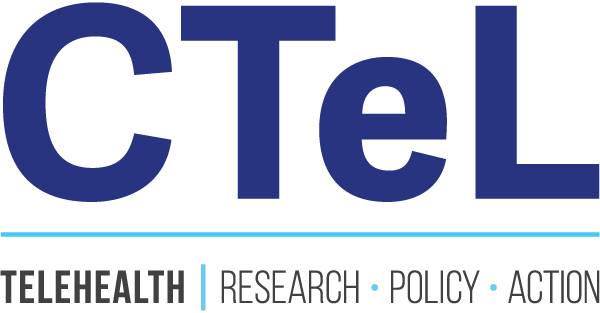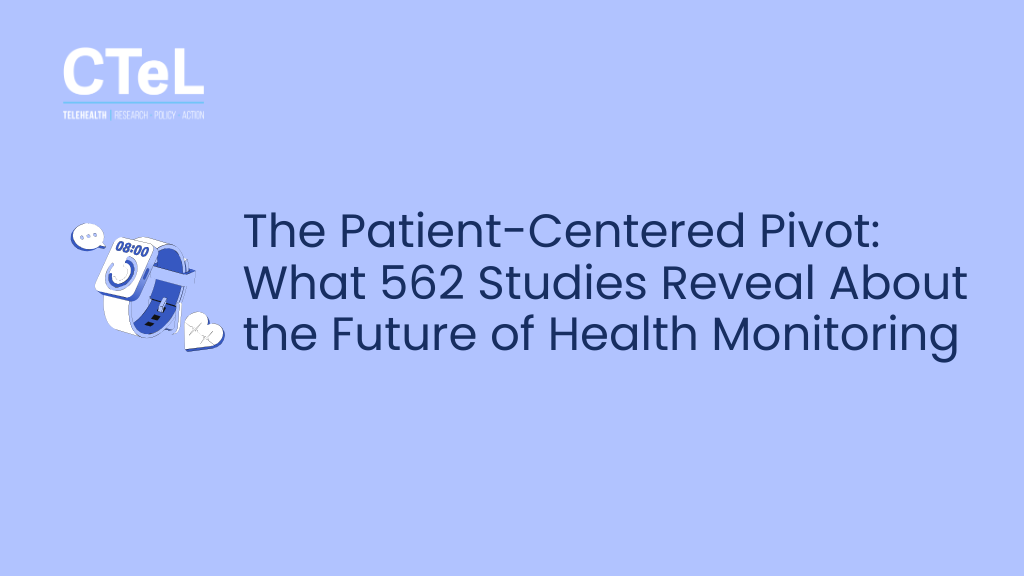The Patient-Centered Pivot: What 562 Studies Reveal About the Future of Health Monitoring
In the rapidly expanding digital health market, billions are being invested in technologies that promise to revolutionize healthcare. For the hospitals, health systems, vendors, and investors of CTeL, the opportunity is immense. But as we race to innovate, a landmark systematic review from npj Digital Medicine forces us to ask a critical question: Are we building what patients actually want and trust?
By synthesizing an unprecedented 562 studies conducted over nearly two decades, the research provides a definitive look at patient and public attitudes toward health monitoring technologies (Chen et al., 2025). The findings present a clear mandate: the future of healthcare innovation hinges not just on technological capability, but on a pivot to a more patient-centered, equitable, and trustworthy approach.
A Cautiously Optimistic User Base
The overarching sentiment among users is encouragingly positive. Across hundreds of studies, patients and the public have observed the clear benefits of health monitoring, including increased health consciousness, positive behavioral changes, and improved engagement with healthcare providers (Chen et al., 2025).
However, this optimism is shadowed by significant and specific concerns that cannot be ignored. The review identifies three primary risks that consistently trouble users:
Pervasive Privacy Fears: This was the most dominant concern, with users expressing well-founded fears about non-transparent data collection and the potential misuse of their sensitive health information by manufacturers, insurance companies, or criminals (Chen et al., 2025).
The Burden of Data: Far from being a seamless experience, many users feel burdened. This manifests as "data obsession," anxiety, and even sleep loss from constant tracking (Chen et al., 2025). Caregivers, both formal and informal, also reported feeling overwhelmed by the additional work of reviewing and monitoring results, especially during the COVID-19 pandemic (Chen et al., 2025).
Accuracy and Trust: Users are rightly skeptical about the reliability of sensor data and how it might impact their health decisions (Chen et al., 2025). This skepticism is not uniform; for example, women actively trying to conceive were found to be the most skeptical about the accuracy of fertility tracking apps (Chen et al., 2025).
Mind the Gaps: Critical Divides in Data, Design, and Deployment
The review uncovers a stark "digital divide" that extends far beyond simple access to technology. The research itself is heavily biased, with over half of all studies originating from just four affluent countries: the United States, the United Kingdom, Australia, and Germany (Chen et al., 2025). The Global South, where these technologies could have the greatest impact, is a massive blind spot.
This equity gap is also present in product design and deployment:
Design Excludes, Not Includes: Many populations feel left behind. Older adults, who stand to benefit immensely, are often the least familiar with the technology and may struggle with usability (Chen et al., 2025). Other groups are alienated by thoughtless design; for instance, members of the queer community noted that the gender options for wearables are often binary and lack inclusive options (Chen et al., 2025).
Usability Is a Major Barrier: Beyond bugs and battery life, users complained that devices could be stigmatizing or "medicalizing," causing them to conceal devices under their clothing (Chen et al., 2025).
The Human Element is Non-Negotiable: A recurring fear is the dehumanization of healthcare. Many patients prefer face-to-face communication, and some professional caregivers reported that using mobile devices for alarms led residents to doubt their professionalism (Chen et al., 2025).
An Actionable Roadmap for the CTeL Community
These findings are a strategic guide for every stakeholder in the healthcare innovation ecosystem.
For Hospitals and Health Systems: Patient willingness to engage with remote monitoring is a significant opportunity, but deployment must be strategic.
Action: Actively address patient concerns about data and privacy during onboarding. Design clinical workflows that prevent caregiver burnout and intentionally schedule face-to-face or telehealth check-ins to preserve the crucial human element of care.
For Vendors and Service Providers: This review is a masterclass in user-centered design and a direct challenge to the "build it and they will come" mindset.
Action: Tackle the primary barriers to adoption: affordability, usability, and trust. Design non-stigmatizing devices and ensure that every function has a clear, justifiable benefit for the user, as some patients require manufacturers to "justify the usefulness of function" (Chen et al., 2025, p. 4). Invest in building trusting relationships through robust user support and transparent privacy policies.
For Physicians and Healthcare Providers: Your guidance is a key factor in technology adoption.
Action: Proactively discuss both the benefits and the well-documented user concerns with patients. Championing these technologies requires acknowledging their limitations and setting realistic expectations to build the trust needed for sustained engagement.
For Investors in Health Innovations: The market is expanding, but long-term value will be captured by companies that build trust, not just tech.
Action: Scrutinize the user-centricity of potential investments. Does the company have a transparent privacy policy? Is their product designed for inclusivity? Be aware of regulatory risks; the review noted that a lack of government endorsement for AI significantly hindered the adoption of AI-enabled devices in China (Chen et al., 2025). Furthermore, be critical of reported outcomes, as the review found that studies with declared conflicts of interest tended to report more favorable results (Chen et al., 2025).
The Path Forward: From Innovation to Integration
The promise of health monitoring technology is not in question. The challenge lies in its execution. This comprehensive review makes it clear that the most successful and impactful innovations will be those that are designed with—not just for—the patient. For the CTeL community, the path forward is clear: we must lead the pivot from technology-first innovation to human-first integration.
Reference
Chen, T., Hertog, E., Mahdi, A., & Vanderslott, S. (2025). A systematic review on patient and public attitudes toward health monitoring technologies across countries. npj Digital Medicine, 8(1), Article 433. https://doi.org/10.1038/s41746-025-01762-4

